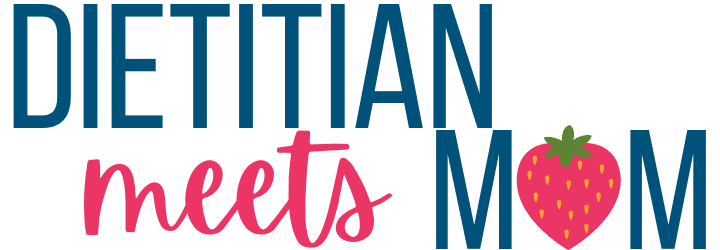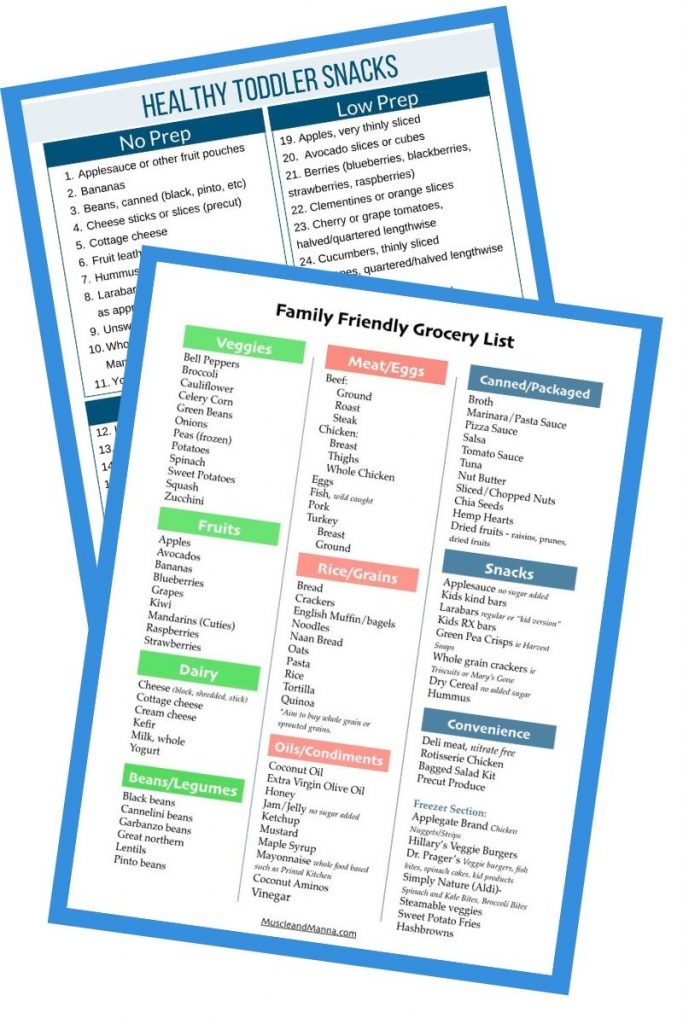Best Halloween Candy for Toddlers + How to Handle ALL that CANDY!
As a Registered Dietitian and Mom, I fully understand the challenges that a holiday like Halloween, which involves plenty of candy and sugary treats, can bring. Figuring out how to handle Halloween with toddlers is even more challenging than with older kids because so many popular Halloween treats are actually choking hazards for young toddlers.
I personally love the idea of giving out non-candy treats for babies and toddlers on Halloween. However, the reality is that your toddler will end up with plenty of candy from other houses, and you will want to have a plan about how to approach the abundance of candy as well as a list of the actual best candy to let your toddler eat!
This post may contain affiliate links. If you click & make a purchase, I receive a commission! Read my full disclosure policy.
Best Halloween Candy for Toddlers
Since chewy candy, hard candy, and round candy are no-gos for toddlers then soft, meltable, and basic chocolate candy is a popular choice.
- Peanut Butter Cups (Traditional Reese’s, Justin’s Peanut Butter Cups, or Unreal Chocolate Peanut Butter or Almond Butter Cups)
- Peppermint Patties
- Various chocolate bars such as : 3 Musketeers, Twix, Kit Kat bars, Milky Way
- Animal Crackers
- Hershey’s bars
Personally, I love to buy candy for kids from the Unreal brand, which remakes popular candy without crazy ingredients, including artificial dyes. (Note: Synthetic dyes are proven to be linked to hyperactivity and neurobehavioral effects in kids.)
Choking Hazards & Candy To Avoid with Toddlers
According to research, the most common choking hazards in candy include round or hard candy, caramels, gumdrops, jelly beans, chewy fruit snacks, and gummy candies. The AAP recommends children under the age of 4-5 should NOT be given hard candies or gum.
While this list is not conclusive, some popular candies to be avoided would include:
- Peppermints
- Jolly ranchers
- Lifesavers
- Jawbreakers
- M&Ms and Skittles
- Candy Corn
- Any hard candy: Werthers, butterscotch candy, lemon drops, candy drops, hard fruit candy, etc.
- Taffy such as Tootsie Rolls
- Gummy candies, including Sour Patch Kids, Gummy Worms, and Swedish Fish
- Marshmallows
- Chewing gum
- Tootsie Pops
If you are unsure if a particular candy is safe, it’s best to avoid giving them that type of candy.
Other Toddler Treats & Candy Alternatives
You can certainly pass out something besides candy. Here are a few of my favorite candy alternatives for toddlers:
- Hot Chocolate Packs
- Animal Crackers
- Cookies
- Applesauce Pouches
- Kid’s Skout Bars
- Raisins
And, here are some more fun ideas (yes, more fun than raisins) if you are looking for a candy alternative to hand out or other Halloween treat ideas for babies or toddlers.
Have A Halloween Plan for Your Kids
Like most things in parenting, it’s important to have a plan for Halloween. Whether you’re feeding your kids Halloween candy at home or letting them trick-or-treat, it’s helpful to have boundaries set prior to the holiday and communicate your plan to your kids before trick or treating starts.
Your plan can look different depending on your children’s ages and your individual family. For example, a 1-year-old and 3-year-old have a totally different perspective of Halloween and what is going on. A 1-year-old will have a limited understanding of candy (especially if they have never received candy before) and will definitely not know that candy is associated with Halloween. A 3-year-old on the other hand will be excited for Halloween, so talk to them about their costume and expected candy!
Obviously, your approach can change depending on older siblings as well. There is no doubt that younger siblings watch their older siblings closely and try to mirror what they do! Decide on an approach that feels good for your family. I’m sharing some ideas you can incorporate into your Healthy Halloween plan based on the age range below.

Halloween Treats for Age 1: Can a 1-year-old have candy?
Most research supports waiting until age 2 to give your child any added sugar. Therefore, it is not recommended to give your 1-year-old candy.
Try making no sugar treats such as these muffins sweetened with dates, no sugar toddler cookies, or other fruits if you want to offer them something fun to eat. Additionally, here are some great ideas on Halloween treats for Babies.
At age 1, it’s pretty easy to avoid candy as long as they have another option they enjoy available. However, if they have siblings and are approaching 2, it can be a bit trickier (or MUCH tricker if they are really noticing what their siblings are eating.) In this case, you will have to play it by ear and do what works best for your family remembering to keep any sugar in moderation.
Halloween Candy: Ages 2-3
At age 2-3, kids start to have a clearer picture of what is going on. They are excited about Halloween, may know the connection to candy, and will almost definitely want some themselves. A plan is still key though!
It’s important to have boundaries in place as well as a clear understanding of how much they can eat so you feel confident in your decision.
Their developement and awareness; if they have older siblings; and their experience with candy will all affect the rules you set for them and your family.
Here are a few ways to approach Halloween candy with a 2 or 3-year-old:
- Allow them a few (2-3 pieces) of candy on the night of Halloween and make it disappear the next day. Note: Likely, if they are 2 they may not think about it again. However, my daughter is 3 and she definitely thinks to ask again the next day.
- If they do ask for candy again (in a day or 2,) offer 1 piece with dinner or a set time.
- It’s more likely that they will ask for more candy if they have an older sibling who remembers their candy and is enjoying some at future times.
- When your child seems like they’ve forgotten about the candy, simply get rid of it.
- Alternatively, allow them as much as they want on Halloween. Then, offer to trade the remainder out for a toy/surprise.
- Have your child pick out a few of their favorite pieces to save in a bag to be eaten over the course of the week and get rid of the rest.
Other Tips for a Healthy Halloween
Halloween can cause stress for parents with kids of all ages — all that candy! But the problem for many is that they don’t have a Halloween candy plan OR don’t feel confident in their Halloween candy plan. My goal is to not only share the best candy for kids and toddlers but help you feel good about the whole night.
- Halloween is just a season. – While having a game plan to intentionally approach these seasons is great and important, don’t lose sight of the fact that Halloween is just ONE day/night (plus maybe a classroom party + candy that can last a month — we’ll touch on that later!)
- Feed your kids a well-balanced meal beforehand. – Kids, especially toddlers who haven’t been as influenced by society yet, have a knack for regulating themselves, and if their belly is full they will likely eat less candy. Additionally, the protein from a well-balanced dinner can help stabilize the sugar in the candy they do consume.
- Have a Plan. – I discuss this in more detail below, including how it can differ by age group, but having a clear plan that you feel confident in can be a sure way to help you actually enjoy the holiday with your kids rather than stressing over how much candy you should let them eat and if they are going to overdo it.
- Emphasize other parts of the holiday to your kids. – I do this with most holidays. While candy is no doubt enjoyable for kids (and adults!), there are so many fun things about Halloween that go beyond the candy. Talk about the costumes, seeing friends, and passing out fun (possibly even healthy) treats at your own house.
Best Halloween Candy for Kids with Allergies
Are you looking for more help and information on toddlers with food allergies? Here are a couple of helpful resources!
Teal Pumpkin Project
Join the Teal Pumpkin Project, if you plan to give away non-food treats for kids. You can find more about the Teal Pumpkin Project here. Basically, families who deal with food allergies can look for teal pumpkin houses for their kids which will allow them to participate while not receiving any candy that would not be safe for them.
Allergy-Friendly Candy
While not all of these choices are safe for toddlers, here is a list of allergy-friendly candy put together by the Kids With Allergies Organization. Unfortunately, many of them are hard/chewy/sticky candies that are not safe for toddlers. However, it can provide you a starting place for finding an allergy-friendly candy for your child. As always, speak with your personal dietitian or pediatrician for questions about your child specifically.
How do you handle Halloween candy for toddlers in your house? I would love to hear your thoughts and ideas in the comments below!

FREE Toddler Snack Printable & Grocery List
Simplify feeding your toddler with these free guides. Sign up for my email newsletter below.

